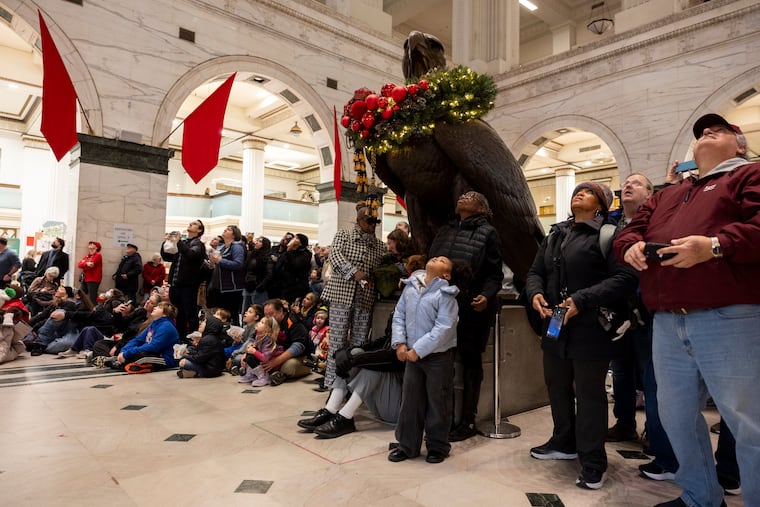Skip to contentDavid Maialetti, Monica Herndon, Monica Herndon, Monica Herndon, David Maialetti, Monica Herndon, Monica Herndon, Monica Herndon, David Maialetti, Monica Herndon, David Maialetti, Monica Herndon, Monica Herndon, David Maialetti, Monica Herndon, David Maialetti, Monica Herndon, Monica Herndon, and Monica Herndon {"ENV":"UAV0TnQxZ1trY1lfYwxaQmhNcAd3InAFfmYMCg==","CONTENT_BASE_PROD":"Uk1zAWAMYwR8c2dOdBxaTWtzZAZ0MlIFaE1wT3QxfAV/Y2AGdCFwBH5zc193InwEf3BkBXcib1h/TWBOdCJ4QmtzYAN3IlJCa2BrWmMxcAVrXWADdxxsB2tdfE5gMlFZfAV0B2MMcAg=","ARC_ACCESS_TOKEN_PROD":"UFl3BnRUbAVTBXtAYDEBA3xgfE92InRMf3NSBXQMdAF8XWhPdjJzWXxwfE90InABf2NSB2AyZEx8TXQEdCJ4AHxwZ1t0DHxMfE1oQHccdE18YGgEYwtjWH9NdE53DHhMfGBjW2MidAB8cHdbdAx0BH9NWVt0ImdYa2BoQGMMdAd8c3NbYwx/XXxje1p0ImQFa2NwBmMicE98c2hNYDJzX3xjZEB0C29Ya2N3XndUY11oY1laYyFsTWtafE93HHAEa2NrWnQMf1h/cHtbdiFwBQ==","GRAPHQL_KEY":"UAVFXl0+cABUWlUEWiJaTH5jdE50DGRMaGNoBWALZEx8XXRPdBxeT35jZEB0HGwFfAVoB3QMWVx+Y3hPdDFjWHxNcEB0DGBCfHNwA3QxZ1h8TWdfYzF8TX9NYE9jDHBCfHNwBA==","GATEWAY_URL":"a293R3cIXk9Vb1kCYyJaBX5jdAV0IlYEa11wB3ciXk1oTXBOdCF/WXxNdAJ0IlZMfE1wQHQibAV/XXNaYwxkQmtzZAJjMl5MfAVkTmALY1h/WndeYwx0CA==","GATEWAY_SLS_URL":"f39dBVgIYAZ8YAhDYwx4A3xjVk9jMnABfHN8QHYiZ15/Y1ZPdzJzWGtjdAdjDGRMfE18B3QicAR8c3AHYyF/XnxgeAZ0IWNdf113XmMLbE1rXV1adAtsQg==","FEEDS_URL":"a3BeB1ohc1xTWn8EWgtSA39zWVtgMmNffGBkT2Acc118c3BPdwx3WXxzYE92MnNYfFpkB2AcdE9/YGhPdAtgTWtja1p0MnxMfAV4T2ALYAd/c1pOdzFgBGtjfE50MnwHfE1wTnYhbAFrXVladFRwQnxjfAo=","RESIZER_KEY":"fmAETnQxWQRUWgQCdCENA3xwYE53Mnddf2N8BXQyZ1h8XXRNYzJ4B39jaEB3ImxNfGBoTnQid1lrY1ZPYzFsBnxdaEBgDH9ca2NWBHQcc19rWngFdFRsAGtjUk13C2AGa11wBncBCAg=","GOOGLEANALYTICS_ID":"f3BjR1wLfE9Uf1VCdyF8A3xzdAd0HGBNfAV0QHYydAV/c2AHdjJgBXxgeE5jMm9Y","TWITTER_API_TOKEN":"UAVBW3dVfExTcH9FYwtWA3xNdE52MngBf1poT3YxfE18c1pAYDJ8THxzcE13VGNcfFp0TncybAFrXXgHYAx4TGtjcE93MnwBfF13W3dUYAR8c1IHdjJ7X2hjeAdjInRCa2N8QGBUYExrY2BNdAtgTGhaZ1tgC39YfHNVW3QLe11rWmBNYBx0T3xje1t3IXNea11/XmMMcAR8cHddYyFvWGhNZ11jMnAAa3NVXnYxb1h/c1lbdzF7WGtdf1x3VHhNa11zXWAxe15oWmNbd1RwB3xjZ1p2MWwFfGNWT2MxZAdoBWdaYwtwBGtjXV93C29cfHNdWmBUZE1rWndfYFRsBGhNa192InRCfmN3XXYxb19oTV1dYyF4T2gFfE90IXtZfmB3XHcyXgFrcGtdYwt4BWtjY1x3IWdZaE1kCg==","GOOGLE_CLIENT_EMAIL":"aF1zXVwLWQdTcHddXDFaA3xwfAZ3MnRNf2NgB2MycAF8Y2RPdyJ3XHxzVkB3DHQAf01wT3YidAVrYHhAdCFgBHxjUgZjIngGfGN3W3ccVgd8WnROdiJ8T3wFY1t3HHhMfFp3WnQLYAdrY1VfdFRvXXwFZ1tjMWwBfHNjW2MLbExrYGNadyJ4T2haa110InxNa11/XGAxbAF8BXRNYAtkAGhNdAo=","GOOGLE_PRIVATE_KEY":"fF18BVoiWUZ/c3NbdjENA3wFeE93InQHf2B4B3ccZE9/Y3QEYAx4BHxwYE1jDG9ZfGN0BXYif15/YHhAYwx0AX9dWk1gDHNYf2NwBHQcVkJ/TXAHYwxzXXwFa150DGBPfGB3XmMxY1x/Y1lfYAxnWH9wfAV0DHhNaGBkBnYydE1oXV1ddxx3X39jVV92IWBNf3N4T3QcZAB/cGBNdwtwTHxNcAR0ImNefmNoT2ALfAR8YGQHdjF8AGtzaANjC2QEfnNkAnYibAZrWmtaYFRnWH5zc153C2dYaGBkTnQhbE1/c2ADYAtkTGhgZ1t0IXNdf2NVXHQiXVhrYHdfdiJSBH5ga1x0DFIEa1pjW3QxbABoY2dadDFzXmhaaAZ3DFlcaE1VW2MxeAd+Y3QDYzF7Xmhgd113IWNea3N4A3cLYARrc11eYwtgQmtwd1xjMWQFa2BnXXccXgRrcHdfYBxSBX5wZ110ImwGfE1oQGAcf118c3wHdiJsBnxgfAZ3VGABaF1gB2Acf19/TXgGdiJWB2hdUgV0InRMaF1WBnciZAZoXVJAd1R/WHxNeAdjIXNcfwV0QGMMZAVrYGgHdwt8T2tjVgZjDGAHaGN/XmAyZ118WnwCdiJzWWhjaARgMntfaF1ST2AyXgB/XXgHdDFgQmhgY1p3Ml5CaGB/WncMdE98Y2NfdCJSBmhdVVpgHF1fa3NkB2MiUgd8Y3wCYyFgTX5jWV90MlIHa3B/X2BUb15/XWgCYyFsBmhjc11jIWxCfmNZWmAccAR+cH9fdCFsTWtda1xjDFIHa3BnWnQLb1l+Y1VbdDFzXGtwZ1t3DFIGa11oA2MxfAFoYGtbdwtkBGtzZ1t2InBPa11oA3dUf15rcGgDdwxSAX5za1x3IXgBaAV/XXcLZExrYHtbdwxSTWtjeANjC2AAa3BkTnQMdE98Y1oFdzJ0TXxjdAd0ImNdfHBkBnQiZAR8XXRNdzJzWH9NVgd0DHAEf3NWT3QMbE1/c2gHdyJ3Xn9dZE50MXxPf3NkTmAMVgF8YHwHYzJsQn9zfE50HGAEfE1gQHcyYAVrYHdfdBx4TWhaZAd3HGdefFpkBnQMe1x/XV1fdDJzX2hga110IXAAaFp0B2ALZAdoXWtdYBxnXH8Fd113Il5MaE1dX3cyUkx+c3tddDJZX3xza193C3BMa2N4B3QxYAZ+Y3tadjJvXWtwf15gC2BPaGNoA3cheAV/c2NcdyJeAH5wdAN2IWQGaGNVWnRUf1xoYHdbdCFvX2hNZ193MWxCaGBkAnQiZAFrWmNbYwtzWWhaYAJ0MXhNa2B0AnQLbAFoBX9fdCJSAGtaZ1p3VHtdaF1rXncxZ1l+Y3gCYAt8TH5je1x0VGNea117X3cxbAd8cHgEdiJWAH9ddAR3MmQAfE1aBGMyUV58XWAGYDJ4BXxdWgd3DFZMfE10BnQcfE9/XX9eYDJkTX9zaE13MmBPf2N8B3QLYAV/c1YGdiJvWGhaeE1jImdYa1p8BmMybAR/BXxAdjJsTXxjWV90MX9ca2NkAnQyd15+Y2tfdDJvXHxgd190MWwBfmN/X3chb11oXV1cYyF8AH9zZAdgMWAGf3N0TncLfAdoWnhPdDF/WWtdXV93C3xNfmN3XncxfAZrcGtedjJZXHxgfAd3MWNff3BjX2MLfEJrXV1fd1RvX2hdXVpgC29YaGNdX3YyWVloY1oCdCJzWH5zf113IXBNa2NdW3ciXk1rXVlcdAtsB35jXV52Ml4Ea3NzXHQxc19rYGdadyF/X35wY1x0MW9YfmNrW2BUbAZrc3QCYAtnXH5zZ19jIl5CfmB8AnYyXgBoXX9eYAx0T39jeAZ0ImBPf018B3YiZE1/WntadBx0BHwFe153DHRCfF1aBnQcc11/XWAFYzF/XGtdcAR3MWNeaF1SBmMye1xoXV1bYyJjWH9adAd3HHAGaF1ZWmMMY1h/c2RPdAxzX2tgeAJ3HGdcf3BrW3QhfAR8c3wGdFRzXmtaZ19gMnNYaF1dX3cyZ198XXNedAt4AWhgZ15jMWNYfmNjW3ciVkx/YH9eYAx7XWhjWV1gMlIEaF1STnQiWVxoTXtfYyFzXH5gd11jMlIEfF1/WnYiXVlrY3NedjJzXWhjY1p3HFJPa3NnXmMxeE9rXWdfYDFkQmhdc1t0MWxPfmN0A3cxc1xoY2tcdiJST2tdVgN3HFlZa1pkA2AxZAVrXX9ddwt8T2hadAJgMWQGaE1jW3QLeAF+Y3wHdjFsQmhjZANjMlIAa2BnXHQLfExoY39fdCJSTGtaYE1jDHQAf3NkQGAMe1h/TWBNdzJWT3xwYAd2ImBCf1p8B2AcbEJ8cGgGYAxvX3xjUgZ0DH9ZfwVkBGMMYAZ8YHdeYzJwBn9zcARjMntef2N0T2AxcARoXX9edjFjXH9dd1pjC3Nef118T3QxcAdrY2NfdjJjX39ga1pgC3wFa11nX2MMZAZ8Y1IHYDFsBmhjVgJ3C39da11SB3cxeAV+Y3AHdzFjXmhjZ113ImNZf013X3RUYAR/WmtcYDF/X35wa113HFlYa11SA3YxfE9oXV1bYyF/XmtzaAN3IXNea3B0BmMLZARoWndfdiJeBWhjWVpgMWRNaF1kA2MhcARoXWtadiFsB35zcAJ0DHNda1p/XXcMUgRrYH9cdCFjX2haZ1pjMWNcfnNZXncyXkxrc3tbYAtvWGhNVVx0VGQGa3BjXHchZ15oWn9cYAtsT35gd1xjIXtff2NaTXQieAB/YHxOYwx0B39wfE10MmAHf2NSQHcydAZ/TWgEYwxnX38FZEBjIlZCfFp0BGMyUV9/Y1YFdDJwQmhjcAdjImNda2N4BXQLYExoXXwEdjFjXH9gZE9gHG9efGB4AnQLY19oYGdaYyFwBWhjc1tgMXNca11rX2MyZEx/cGBAYyFzWWtdVgZ0DGddaE1dXnYxeExoY2gHYwxnXnxzd192MWAEaGNwA3QLZ1h+Y3xNYyJvX35jXV50IWAFaGBgT3ccUkJ/c1pPdiJdXWhgaAJjIl1daFpjXnchc15rYGNadBxSAGhjXV52MXgEaGN/WmBUb15oYHgCdzFwTH5gZ19jC3gHfmBjXWAcXVxrc3QCYDJeT35jWV10IlJNaFprXXYyUgRrc1ladCJeBmtaeAJ2IXxPaGNZWnQLZ11+c3gDYyFkTWtdXV52IXhMaAVnWnQMZEJ/TXQEdyJgT39jVgZ3MlYEf2B8B2AMYAB/TXwGdzJ/WX9zaEB2MmAHfFpkBGMMb19/WnwHdDJnXXxNYAZ0HGdffHNSBmAMdEJ/TXgHdAt/WGtaa15jC2wGf3NaBWMLY15/WnxAdDF8Qn9aY15jIWRNaFp4QHciXgZ/Y2RAdCJsTWhNaAZ0MXBNf01jXGAcZE9rcHwCYwxkAWhNeAJjMnRPfnN3XnYyY1h8c39fdzFvX2hdYAZ3DHgGfnNjXHcyXV1+YGAHdjF4TX9NZ1x2Mmddf3NdW3cyUkJrc2QCdBxSB2hjc1t2MX9fa11zW3dUYE1oY1oFdwtnWWtaa1pgHFlZa3NnWncLb1hrY1YCdjFsAH5jc1x3VGAAaGNZXGBUY15oY1IDYwxST2tzY1xgVG9Za3N0B3YhYAZ+YGQCdiFkTGtzdAJ0C2BCa3NkA2MhcAdoTXQGYAxgQnxgYAR2MlZNf3NwTnQMcE1/XVpPdBxvXX9zd15jMnhPf3NkT2MMd19/Y3NbdwxWAX9NUgV2MXwEf3N0TmAcZ1lrWn9fdzJsBHxzfAZ0IndZf2BoBWMxcAd8c1ZPYyFsBmhjZAd2InAEaFprWmAxf11/TWQFdBx/WGhga1tgVHBCaF13W3cid1hrXWdfdzJZXH5zZ1tgDGNYa1pjX3YyWV58Y2tedwtgAGhdZAZjIllea3NoA2BUeAF/XWgDdjFgTWhdf1tjIlIBaF1wAmBUZAVoWn9aYyFzXH5wdE93MWxMaGB/X3QMXV1+Y1VedCFgAHxNf15jIWBPa3N/X3YhZEJrWntadjF8QmhjY1t2IWwGfmBnXHdUcAV+c39bdDJdXn5wdAN0DF4Aa1p7X2MMUgZ+YH9cdwtkQmhNa1tjIWxMa3NnX2Mxf1xoWmNbdyFjXXxzZARgHH9ff01kQHciZ198XVoHdBxRXn9NcAd0MnQBfGB8QGMibEJ/c1IFdyJ3XWhafE90DHBPf3NVWnQybAVrY2gGdiJgBX9zUk52MXBMfGBgBmAcbAR8Y3dfYDJ3XX9aa19jC3BPa11wB3QyeAZoWmdedxx0TH9zZE90MXwFf2N8B2MMc19/YGBAdCJeAX9wYEB0IXwAaAVrXmAcZAV/XVVcYyF8TGhNfAN0IXBCfGN4A2Myc15+c3NfdAtwT2tgdAR0VGdZfmNnXncxcAZoXWNfYyFsAWhgd190C3gGf3BnX3cLc1loYH9aYyJST2hgaAJ3VHABfmNVW3cxb19oTWdbdyJdXmhdYAd3MXBMaGBnXHRUc19rc1VbdDFwBWhde1tgMXAAfnB3XHQMXk1rY1lbYAx0Bn5wZ1x0Ml1Ya2B8A3QiUk9rc2NfdCFsQmtdY15gDGNefF1SBHYyZAR/WmgFYBx8Qn8FZEB2ImRPf118QHQiZAV/c39eYBx4Qn9zVkBgC3wGf2NkBHQxbAB/Y2dbdAt8AX9afE90MmAGa2NkBnRUfAFoY2BPdyFwBGtad152InAFfHBrXncidAV/c3wCdDFwBXxjUkB0InBNaGNdXnQMcEx/c3NbdxxnWWhge190IWRMaGNnXWMLfE1+Y11ddwxdXnxgZAJjDGRNaFpgQGMhcExoTXwHYBxSAGhNd190MWBPfnNZX3Qyb19oTXNeYyFkB35zXVpgMXgGaGNzXGAcYARoXXgDdDFsAGhdd1pjMWAGa2NzWnRUbAdrcGtaYzJeTX5gZ193VGwEaAVjX3cxYARrWndcYAxdX2tzaANjC3wBaFpnW3Qhe1xrc2dcdAtwAGtda1t2MWQAfnBnXHYhf11rc3QDdCFjWWtgZ193C2AEfmB4B3QiVgB/BWBNdzJjWHwFdAVjMm9YfE18BnQie19/cHQGYDJRXHxNfAR2InNff3N0BXchY15/BWhAdzJgTX9adAZjDHAGaF1jW3cMbEx/WmBNYDF8BXxge190MmBCf2NWB2AyY1lrXWAFYwtzXWtdY190VHgGaGN7X3cLfAV8Y3QHYwx0AX9jcAZ2IXgHaGN/XGAxfARoY3teYyFvWWhjfE5jImdYaGN/W2BUc118Y3tfdjJeTX9dcEBgMl5Ma11dWncyWV5oTWACdFR4T39dVgNjIWwFa2NjX3RUbAVoYHQDd1RzXmhje1x0MWxCa110AndUbAB/c11ddFRvWGhjY11jC2NeaGNnW3chZE9rc2deYDJeB2hdeAN0C2wEaFpnXncxZEJ+cGADYDFkQn5gZANjC3xMf3N/XGBUc1loBXtcYFRjWGtze1xgMXgBa2NVXncLYEJ/TXRPYAxWB39gfE5gMmQHf2BoTncibE18BWhAdjJ3X3xddARjIlYEf2N4B3YiYAB8BXwFdwxnXn9zc15gHHNff11VW3QcbExoXVJAYDJ0TGhge1pjMXxNaF1oQGMyYE9oBWgGdjJjXH9ddEB0DGABfE1rX2AMVgRrWmgHdwtsAWhdeAJjMmdea11oBXRUbAdoXXdfYyFgT2hjVkB3MmdffHBgB3YhY19oYGdbYzFsBX5za112ImQFfGNkB3YyXV1+c1lcdiJST2hNc150HFlda3NoBXRUbAZrXXdfYDJZWXxgYAJ0VHgFfmN4AnQxe1hoWntbdyJnWX5jeAN0VGNYfmNZXWMLb11+Y1JPYwxZWWhjVgJ3MWAFa11VXmMxbAVrY3NbYyJdXGtzUgN2MXAHfnNoA3chfE9oTVVadyFnXH5wYAN3Il1cfnBnW3RUZABrc1lcYzJ0TH9jVkBgMlFZfFpgTmMyVk18XVYEYAxWAX9zVkBjMnwGfE1SBXYyb1x/BXxAYzJ/WHxzXV5jInQAfHNkBXQMd19/TXAGdCJ0AHxweEB0MmNYf3N0B3cye19/Y2hAdBx0Qn9jUkBjDG9dfE1aBGMib1x/XWQK","BLUECONIC_ENDPOINT":"VVp3WlsubExUcF4HXTFeA3xzdEBjMnQAf3N4B2MyZE18Y2hPYwxjX3xze1t2MnRMfF1wBnQhY1l8c2dedBx3XGtje150HHgBa2B0B3YyfAV8TVVaYyFvXGhaZAd3VGAH","BLUECONIC_STORE_ID":"UE1ZAVtUAAVVXWROXCF4A3xwdAZ3HHAAf2B0QGAMeAZ/c3AGYAx0AXxwZAZjMnQFaFpkTWAMf158WmBAdzJkTX9zUgd0MndZfFp4TmAyVgR8TWRNYzJ7XHxNUkB2ImwAfwVgTmAyeE9rY2NedCJ/WA==","BLUECONIC_KEY":"UH9dWVgMb0FUWmMBdwsBA3xjWk93DHAFfHNkT3QicAd8Y2BAYAEICA==","BLUECONIC_SECRET":"fn9nT1wIbwFUY1pAXVRkA39afE53MnhPfHBgT3Qcd198cHxAdAxsB3xwYE52IXwAf2NaTnccf118Y3hAdFRsQn8FaAd0DHdYa2BrX2AxbAF8WmBOYAtsTHxNZAZgDGNdaFp4T3QnCAg=","AMP_AUTH_BASE_URL":"a1pkTlwMY0V/WUFeW1RkA3xwY1t3MmddfGBgB2AMcAR/c1JPYyJgB3xzf1t3MnNefF1SQHcxb1l/cGRPYAx0T2tadE9jDHwGf2B3W2Acc1loWnhAdDFwBGtjaAV0VGxNfF1jWmAxYEJrY2dadCF8BGtjaAR2IndcaGBrW3Qxe11oBWdaYBEICA==","AUTH0_DOMAIN":"f1oEAlsMfEx8BHADWjJ4A39jVkBgDHNcf3NwT2AMYAR/c1pPYwxkB2tdeAd3ImRNa2B4QGMMcE9/c1IHYzJnXA==","AUTH0_CLIENTID":"aFlwB2Mcb0RTcHdGW1RCA3xwdEBgMnRNfE18BnQye198c3gGYzFgAHwFZEBjInRMf2NSQGAMYAF/Wn9bdBx3X3xzaE13MmAHfHBkTncxbAZoXWhPdCJsB2tgYAZ0DHBCfHB8T2A3CAg=","PIANO_ID":"U1pJWV0hAAVUb2dNdAtgA3xafEBgDHwFfGNgTmMyc118YHxPdxx3X38FZAo=","MIXED_CONTENT":"VWBdAWBUVgRTBF5OYwh0A3xgeEBgHHABf3BgBnQcY1x8YHRAYDJnXXxwYEB2MnQGf3NVWmMycEJrY2QHdxxgAHxzZAd2MmNef3BnWnQhYE18c3AGYzJ8TX9aaE5jC2NZaGN7WnQLb1w=","VIAFOURA_SITE_UUID":"UmAIAVg+Y01Vf2hOYxxeA3xjUgZgDGdff2NwT3Qic11/c1YHYwxjWHxaaEB3HHhNa2NaTWMyf158TWRNYDJkT3xNfARgMnNff010TXQifAZ8TXRNYyJ4AXxNe1p3HHxMf11oTXccb118WmBNYDJ8TA==","GOOGLE_CLIENT_ID":"U3B7Q2MMXQd/BFVOXAxaQnxdcAR0IWwFfnN3WnQyUgRrY3NedCJWTX9NcAVjMnQEfAVkBGAMXkJ/Y2ADdCFwQmhNcAR0DFIEaAVkBWMxY1x8BWgGdxx3WHxjf1pjDHRPa3BnXnRUbE9oTWtcYzFgBH9gaE5jDFlYf3BkB3QiUVh/cGhAdzF7XnxaeANjIm9Za3BgBnQhf198TX9edCFsAGhgYAV3MXxCf3B8TnQyWV9/TXdbdDJeTWtjY1p0ImAFfHNwA2MiYEJrc3RPdDFsCA==","AUTH0_BASE_URL":"UE17B2ALDE1Sc3BPWy50A39zUgZ3MnNdfHB4T3QMZ158c2AHYBxnWHxgaAd3HHQGf01rWncLYAd/Y2NaYAx0AWhddAdjMntYa1p8TmAyVgF8c1ZPYyJ8AHxNY1p2MXBNaGNnWnYhYAZrYGgK","CHARTBEAT_DOMAIN":"UnNVQncLUUFrBFVGWAsFA3xgZAZ0DHdffGNWB2Myd118YGBPdiJwBWtjWk9gMnQG","G_OPTIMIZE_CONTAINER_ID":"a290T11VYwBUYEFfYyF8A3xNcE1jDHdff3BgBGMMf1x8XVYGdjJ4BnxwfE5gEQgI","G_TAG_MANAGER_CONTAINER_ID":"U29zXF0IVk9TcFlFWxxeA3xNWk12IngEfF1wBXYyb1h/YGBNYAx4BXwFdAo=","SF_CLIENT_SECRET":"VG9BQFsLTVtQWnxPXQsBA3wFeAdjMnhPf2NgQGAyY15/Y3wGYwxRWHxNYE5gDGQGfGNgB2Mye198WnxNdxx4BHxddAR0DGNZfE1WTXQMeE98BXxAYwx3X3xNcAd3MnhCf110TncydAB8XVJPdBx8BX9geEB3MnRPfE1wTWMyb158YHxAdCFsBXxzWk90InddfHNaQGAMdAZ8Y2dfdjJ0BHxzYEB0InQEfHNST3cic15oBXxAd1RgB39wZAo=","G_RECAPCHA_V3_KEY":"f29BBWMcc15Tc39EWCFCA39dZE10IndYfHNkTXccdE98TWgFdDJ3WXxdWkB2MmwBf2N4TWAMe1x/XWhAdDJ8BH9jfEBjMnBNfF1nXnQLbEJrWmRPYwxgQnwFeAZjMmBCfHNaTXccc11/cHROdiFkBX9ze153DHAFfE14Cg==","G_RECAPCHA_V2_KEY":"UnNzWmBVYwRTWmhNWwtaA3wFdAZ3In9ffHN0TXccdAZ8cHRNdzJgBnxwYE1jIntefFpkTWMie118Y2hNdxx8T3xgeAZ0HH9fa2N0T2AyY1l8Y1VbdAxwB3xadAZgHHQEf2NoTXQyc15rXVoGdyF4B3xdd1p0DHQEfE1wCg==","GROWTHBOOK_CLIENT_KEY":"awUEBVshAQd/c3gEWBxSA39gYE90DHtdfHNaBnYyZAd/BXwHYDJsBnxgYEB3MnNYf3N8TXQMYAR8Y1IHdDF/Xg==","SOPHI_HOSTNAME":"VVlVR2MyXUBQBF0CWDJaTX5zdE50IXwFaF10T3QiXk18Y3QFdCJRWWhjcE90IndZaE10A3ciUVloUAwK","HTL_SCRIPT":"UFl7Alsxf118WXsBd1VwA3xgdE90ImAHfHNaTnQid1x/c3hAYzJ0AHxgdEB2MnNYfE14B2MMc1h8Y3dbdzJ0BGtddEB2MndZa117W3RUbARrWnxPdwx8BXxNcEBjDHgGa11/XmAxbE18Wn9aYAtsB3xNY1p0C2wAaGN4TncMeAZ/Y2NcdCJ4AGtze1x2MWwE","LIVEBLOG_WS_SERVER":"fwVrTWAce0J+Y3dEd1VkA39jWkB0HHBNf3BgT2AycAZ/c3wGYzJwTGhdYEB0HGRCa2N8T2MycAV/cGhAdDJkB2hdaE90HFYBf3NaQHYieAVrWntadAt/Xg==","SOPHI_SCRIPT":"UH9eBVs+WUNUYAhEdiJaTX5zdAN0Ml4Ef3N3XHQLfAV/Y2ROdzJ0BmtzZE50HFIEfmNkA3QiUk18TXADdDJnWX9geE9jMmRPfGNwAmMyVkJ/BWgEYwxZWWhNeE5gDFJMa1pnXmAyc1l8WmdeYwxsTHxNeE5jMntcf01/XGMMc118BX9cdDFnX2tje1pjDHNYaFp0T3QcbEx/TVoEYBxnXn9gfE1jIm9YfEAMCg==","STATS_WIDGET_CLIENT_ID":"VGNjAl0LZE9+b3NHdAtGA3xzVgZgDHddfGNaB3QMZAF/Y1JPYwx3Xn9zdE9jDHRNfHNSQHQydAZ8Y3AHdDJkTXxwf1t2MnQA","_id":"73243b3a2c7693e9f6f1b99edddf78fdd64df6d5e205b449bbd9aac14bccd4a0"}



















